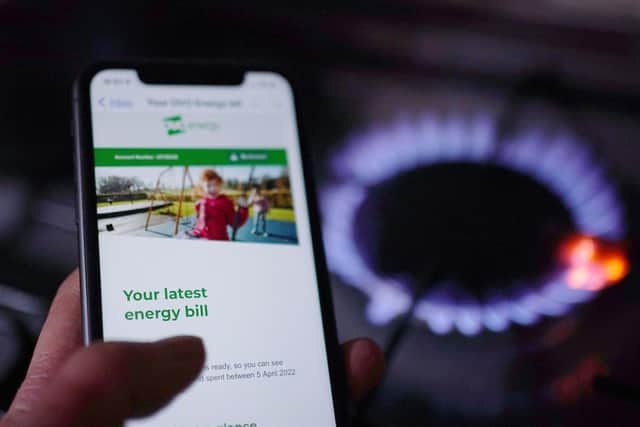Energy social tariff would establish a safety net for struggling households - Emma Hardy
The radical hikes in energy costs over the last 18 months obscure the fact that we were already a nation facing significant problems with fuel poverty. In 2020 the government estimated the number of people in fuel poverty to be 3.2 million – 13.2 per cent of all households. The Resolution Foundation estimated that figure had risen to 6.5 million households before October’s new price cap of £2,500.
The “energy market” has broken down, with all companies offering the same prices, and the cap protecting fewer and fewer people while effectively subsidising bills for those fortunate enough to be able to afford the higher prices.
Advertisement
Hide AdAdvertisement
Hide AdAn effectively designed social tariff for energy would establish a safety net for eligible households who would otherwise be struggling to afford their bills. It would be a rate discounted below the price of the cheapest available energy tariff and targeted at those living in fuel poverty or on a low income.


How would such a tariff work in practice? Belgium has been running a scheme for some years now. Essentially, it tracks the lowest commercial tariff but is set below it. It is recalculated every three months, but any rises on the previous quarter, and/or the previous four quarters are capped. In that way it is reflective of, but always lower than, the cheapest commercial option and users are protected from sudden, sharp increases. An essential part of its operation is that it is offered by all suppliers.
Who should qualify and how would they be identified? I believe a good place to start would be anyone in fuel poverty, i.e. spending more than 10 per cent of their income on household energy. As the numbers in fuel poverty stretch well beyond those in receipt of benefits, as well as using DWP benefit entitlement, energy suppliers could be given access to HMRC real time earnings data in the same way as DWP is for Universal Credit calculations. This would mean the large majority of those eligible could be offered the social tariff automatically.
A huge and growing issue that needs addressing is prepayment metres. Usage has increased to 7.4 million homes. Courts in England and Wales granted more than 187,000 warrants to energy companies to allow them to enter customers’ homes and forcibly install prepayment metres in the first six months of this year alone and Citizens Advice has seen a dramatic increase in the number of people coming to the charity because they’ve been forced onto a prepayment metre: up 138 per cent in the last two years. As well as the highest tariffs, standing charges on prepayment metres are an average of £50 a year higher, meaning we have the grotesque situation of those least able to afford gas and electricity paying more than a millionaire before they have even turned anything on. This cannot be allowed to continue. A social tariff can, and should, replace this iniquitous system of disconnection by stealth.
Advertisement
Hide AdAdvertisement
Hide AdAny social tariff must go hand in hand with a program to properly insulate the UK’s homes, rigorous, enforced regulations on new-build and a wider energy efficiency drive for the whole economy.
Emma Hardy is the Labour MP for Hull West and Hessle.